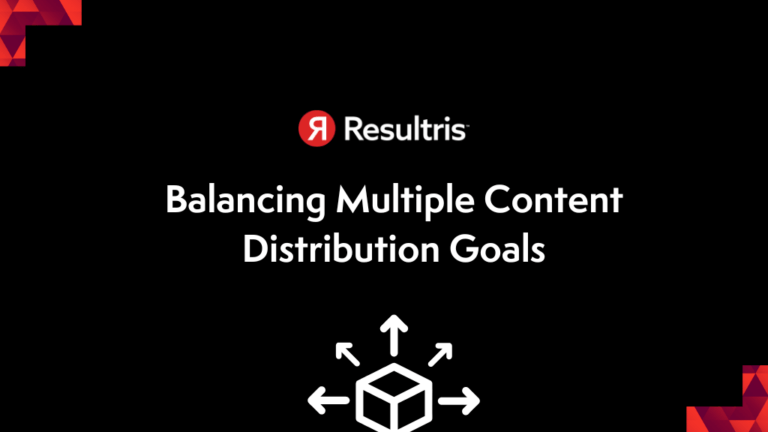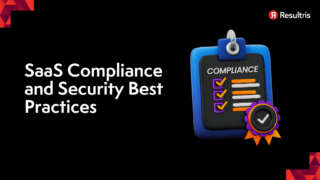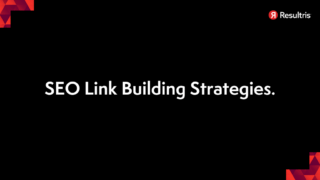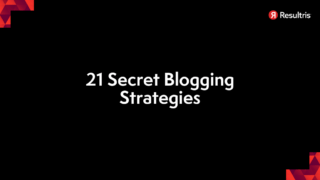

Written by: Tim Eisenhauer
Last updated:

Have you ever tried juggling? If so, you’ll understand when I say managing multiple content distribution goals can feel eerily similar.
You have a host of goals in the air, each essential, and you’re putting on a brave face while trying not to let any of them fall flat on the ground.
Yet, unlike juggling, where the worst-case scenario is a few dropped balls, faltering in balancing your content distribution goals might mean a significant business setback.
No need to break a sweat, though. This guide will arm you with everything you need to navigate this juggling act with the finesse of a seasoned circus performer.
Before we dive into the nitty-gritty, let’s get our basics right. Imagine trying to assemble a piece of Ikea furniture without knowing what the final product should look like. That’s what it’s like tackling content distribution without understanding its goals.
So, what are these goals we’re talking about? Content distribution goals encompass everything you aim to achieve when you push your content out into the digital world. This includes anything you do for your online content marketing, ranging from increasing brand awareness to driving website traffic, generating leads, nurturing relationships, or any other strategic objective tied to your content.
Attempting to balance multiple content distribution goals is like walking a tightrope while juggling. It’s doable, but it comes with its set of challenges.
Each goal may require a different approach, varying resources, and distinct performance metrics. Not to mention, a misalignment could end up in mixed messages, cannibalization of your efforts, or worse, goals working at cross-purposes.
That’s the bad news. The good news? We have solutions to these challenges. Let’s keep moving.
Understanding the many different content distribution channels available can significantly expand your reach and open up new opportunities for engagement. Let’s take a look at some popular channels:
Social Media: Sites like Facebook, Twitter, LinkedIn, and Instagram allow content to be shared easily, providing the chance to broaden your audience and increase interaction.
Email Marketing: This is an effective way to share your content directly with your subscribers. You can utilize email newsletters, promotional emails, and other campaigns to deliver your material.
Search Engines: Platforms like Google, Yahoo, and Bing are perfect for distributing your content to individuals searching for information related to what you offer. Optimize your content for search engines to increase your visibility.
Video-sharing Platforms: Sites like YouTube, Vimeo, and TikTok are great for distributing video content, allowing you to reach a wide audience and increase engagement.
Content Syndication: Distributing your content on third-party websites can assist you in expanding your audience and boosting website traffic.
Influencer Marketing: Partnering with influencers to distribute your content to their followers can help you target a specific audience and increase engagement.
Podcasts: An excellent medium for distributing audio content. Create and share podcasts to reach your audience and increase engagement.
Content Discovery Platforms: Platforms like Outbrain and Taboola are great for distributing your content to a wider audience. These platforms display your content as recommended articles on other websites, helping you attract more traffic.
Remember, using a diverse set of methods to connect with your audience is the key to efficient content distribution. It helps you boost visibility, drive more visitors to your website, and achieve your marketing goals.
Social media platforms are a potent tool for distributing content due to their widespread reach and influence.
How it works: Social media content distribution involves sharing your content—blog posts, videos, infographics, etc.—on platforms like Facebook, Twitter, LinkedIn, and Instagram. These platforms have algorithms that determine how content is displayed to users. To be effective, it’s important to tailor content to the individual requirements of each platform.
Benefits: Social media platforms are where a significant portion of your audience spends their time, which means content shared on these platforms is likely to be seen and engaged with. They also facilitate direct engagement with your audience, including comments, shares, likes, and more.
Potential drawbacks: These platforms are crowded, and standing out can be a challenge. Algorithm changes can also affect your visibility.
Best practices: Know your audience and where they spend their time. Tailor your content to the platform—shorter, engaging posts for Twitter, professional content for LinkedIn, visually-rich posts for Instagram. Regularly engage with your followers—respond to comments, participate in discussions, and so on. Using social media management tools can help streamline your social media content distribution.
Email marketing remains one of the most effective ways to distribute content directly to an audience who has already shown interest in your brand.
How it works: Email marketing involves distributing your content via email to a list of subscribers who have opted to receive updates from you. This could involve newsletters, promotional campaigns, personalized recommendations, and more.
Benefits: It provides a direct line to your audience, and with personalization, you can make your audience feel valued. It is cost-effective and provides a great return on investment.
Potential drawbacks: Overloading your audience with too many emails can lead to subscriber fatigue. Emails may also end up in the spam folder, significantly reducing visibility.
Best practices: Personalize your emails. Make sure your content is relevant to the recipient. Don’t overload your audience with emails, and always provide an easy opt-out option.
Search engines are the gateways to the internet, and optimizing your content for these can significantly increase your visibility.
How it works: Search engine optimization (SEO) involves enhancing your website and content to improve its visibility in search engine results pages (SERPs) for relevant queries. This can involve keyword optimization, improving site speed, backlinking, and more.
Benefits: High rankings in SERPs can drive a significant amount of organic traffic to your website.
Potential drawbacks: SEO is a long-term game; results are not immediate. It also requires consistent effort and adaptation to changing algorithms.
Best practices: Research and use relevant keywords in your content. Create high-quality content that answers your audience’s questions. Keep up with SEO best practices and algorithm changes.
Video-sharing platforms are an excellent stage for distributing video content, often leading to high engagement rates.
How it works: These platforms, such as YouTube, Vimeo, and TikTok, allow you to upload, share, and promote video content. They offer features for categorization, tagging, and SEO to help your videos reach the right audience.
Benefits: Video content often has higher engagement rates than text. These platforms have massive user bases, offering the potential for wide reach.
Potential drawbacks: Video content can be more time-consuming and costly to produce. Competition is high on these platforms, so standing out can be a challenge.
Best practices: Make engaging, high-quality videos. Use SEO practices for video, like keyword-rich descriptions and tags. Engage with your audience in the comments.
Content syndication is a way to amplify your reach by leveraging third-party sites.
How it works: This involves publishing your content, either in full or a summarized version, on third-party websites. These can be industry blogs, news sites, or platforms like Medium and LinkedIn Pulse.
Benefits: Syndication can significantly expand your audience and boost traffic to your site. It helps build authority and credibility as your content is featured on reputable sites.
Potential drawbacks: There’s a risk of duplicate content which can impact SEO. Also, you might lose some control over your content once it’s on a third-party site.
Best practices: Only syndicate your best content. Always include a link back to your site. Use canonical tags to avoid SEO issues.
Influencer marketing can help you reach a targeted audience and boost engagement.
How it works: This involves partnering with influencers (individuals with a large following and influence on social media) to promote your content to their followers.
Benefits: It provides access to an engaged, targeted audience and builds trust via association with the influencer.
Potential drawbacks: It can be expensive, depending on the influencer’s fame. Influencer audiences may not always align with your target market.
Best practices: Choose influencers whose audiences match your target market. Make sure the influencer’s style and values align with your brand.
Podcasts are an increasingly popular format for distributing audio content.
How it works: A podcast is a series of spoken-word content, often released in episodic form. You can distribute content via podcast platforms like Apple Podcasts, Spotify, and Google Podcasts.
Benefits: Podcasts are a growing medium, with a highly engaged audience. They allow for deep dives into topics and help establish your brand as an industry thought leader.
Potential drawbacks: Podcasts require time and equipment to produce. It can take time to grow a significant audience.
Best practices: Create high-quality audio content. Regularly release episodes to keep your audience engaged. Promote your podcast on other channels to increase listenership.
Content discovery platforms can introduce your content to a wider audience.
How it works: These platforms, like Outbrain and Taboola, show your content as recommended articles on other websites. This can drive traffic back to your site.
Benefits: It exposes your content to a wide audience. It can drive high traffic volumes to your site.
Potential drawbacks: It can be expensive, and the quality of traffic can vary.
Best practices: Monitor your campaigns and adjust targeting as needed. Use compelling headlines and images to encourage clicks.
Now, let’s dive into some recent statistical trends related to balancing content distribution goals:
These statistics highlight the need for creating engaging and relevant content, leveraging industry thought leaders, optimizing for mobile devices, and using social media platforms like LinkedIn for reaching your audience.
By understanding these trends and incorporating them into your content distribution strategy, you can increase the effectiveness of your content marketing efforts and achieve your marketing goals.
Balancing multiple content distribution goals can be a daunting task. However, with a clear understanding of your goals and the right strategies, you can manage it effectively.
Here are some strategies to help you achieve this:
Identify Your Content Distribution Goals: Start by identifying your goals. Ask yourself: What are you trying to achieve with your content? Who is your target audience? Which platforms do you want to distribute your content on? What outcomes do you desire? These questions will help you create a clear picture of your aims and define the measures of your success.
Segment Your Audience: A single piece of content can’t resonate with every audience member. Segment your audience into groups based on factors like age, gender, location, and interests. This way, you can create content tailored to each group’s specific needs and preferences, increasing the likelihood of engagement.
Utilize Different Platforms: No single platform will reach all your audience members. Diversify your content distribution strategy by utilizing various platforms such as social media, email, podcasts, and video. This will allow you to reach a broader audience and increase the chances of engagement.
Repurpose Your Content: Constantly creating new content can be time-consuming and expensive. Balance your multiple content distribution goals by repurposing existing content. For instance, turn a blog post into a video or create an infographic from a white paper. This way, you can distribute it across multiple platforms without creating new content every time.
Use Paid Advertising: Implementing paid advertising through platforms like Google AdWords or Facebook Ads can help you target specific groups with your content. This is particularly effective for promoting new products or services, reaching new audiences, and increasing brand awareness.
Measure Your Success: Track your progress to identify what’s working and what isn’t. Analyzing metrics such as engagement rates, click-through rates, and conversion rates can help you fine-tune your content distribution strategy to achieve maximum impact.
Enter the knight in shining armor: a well-defined content strategy. Picture it as your business’s North Star, guiding your way amidst the chaos. It aligns your various goals, ensuring they not only make sense together but also steer your ship in the direction of overall business objectives.
Your content strategy should include your target audience, content types, distribution channels, and key performance indicators (KPIs). It’s the blueprint that will help you manage and balance your content distribution goals.
Remember, we’re aiming for a symphony here, not a cacophony.
Just as a chef carefully picks ingredients for different dishes, you should create content with your specific goals in mind. One-size-fits-all content is about as successful as serving spaghetti at a sushi bar.
Brand Awareness: If your aim is to increase brand awareness, your content should be informative, engaging, and shareable. Think infographics, blog posts, or informative videos that users will want to share with their network.
Lead Generation: For lead generation, your content needs to be more targeted. E-books, webinars, or case studies can work well here, offering valuable insights in exchange for contact information.
Customer Retention: Content aimed at customer retention should focus on providing ongoing value. Regular newsletters, product updates, and user guides can help customers feel continually supported and valued.
Having the right content is only half the battle. You need to deliver it to your audience in a way they’ll appreciate. This is where choosing the right distribution channels comes into play.
Understand where your audience hangs out online, what type of content they consume there, and align it with your goals. A well-placed webinar link on LinkedIn could drive more qualified leads than an infographic on Twitter, while a blog post shared on a Facebook group could spread brand awareness more effectively than an e-book offer on Instagram.
In this juggling act, it’s not enough to keep the balls in the air. You need to know if you’re improving, stagnating, or dropping the ball. This is where KPIs come in.
Establish clear, quantifiable metrics for each goal. Want to increase brand awareness? Measure social shares, mentions, or website visits. Looking to drive lead generation? Track downloads, form completions, or email sign-ups. By tracking your KPIs, you can adjust your strategy as needed, ensuring you’re moving closer to your goals, not farther away.
Your Key Performance Indicators (KPIs) are vital measures that help you understand if your content strategy is working. They represent your content marketing goals quantitatively and guide your future content initiatives. Here are some of the most critical KPIs to track:
Website Traffic: This includes tracking the number of visitors to your site, where they are coming from (referral sources), how long they stay (session duration), and what pages they visit (page views). Tools like Google Analytics can provide these insights.
Engagement Metrics: These include likes, shares, comments, and time spent on the page. High engagement signals that your content resonates with your audience. Social media platforms provide these metrics, and you can also use tools like BuzzSumo to measure engagement across various channels.
Lead Generation: If one of your goals is to generate leads, track the number of new leads or subscribers you gain through your content. You can track this using your email marketing software or CRM.
Conversion Rate: This measures the percentage of visitors who complete a desired action (like making a purchase, signing up for a newsletter, or filling out a form) after consuming your content. This KPI is crucial in understanding if your content is driving business results.
SEO Rankings: Track your content’s performance in search engine result pages (SERPs). If your pieces rank well for targeted keywords, they’ll bring in organic traffic. Tools like SEMRush or Ahrefs can provide this information.
Bounce Rate: This is the percentage of visitors who navigate away from your site after viewing only one page. A high bounce rate might indicate that your content is not relevant or engaging enough to keep visitors exploring.
To set these KPIs, you must first understand your business goals. Once these are defined, you can set corresponding KPIs for your content strategy. For instance, if your goal is brand awareness, your KPIs might include website traffic and engagement metrics. If your goal is lead generation, you’d measure new subscribers or leads.
To measure these KPIs, you’ll use various tools (some mentioned above), and you’ll typically look at these metrics over a given timeframe, such as monthly or quarterly. It’s essential to continuously measure these KPIs and adjust your strategy based on what they tell you.
Above all, remember that not all content pieces will perform equally well on all KPIs. Some content is better for driving traffic, some for engagement, and some for conversions. That’s why having a balanced content distribution strategy is key—it allows you to meet multiple objectives and reach your overall business goals.
Balancing multiple content distribution goals may seem daunting, like trying to keep several balls in the air at once. But with a clear understanding of your goals, a well-defined content strategy, content tailored to diverse objectives, right distribution channels, and clear KPIs, you’ll not only keep those balls in the air but also master the art of juggling them.
Remember, it’s not about perfection. It’s about progress, iteration, and constantly moving forward. So grab those balls, roll up your sleeves, and let’s start juggling!




